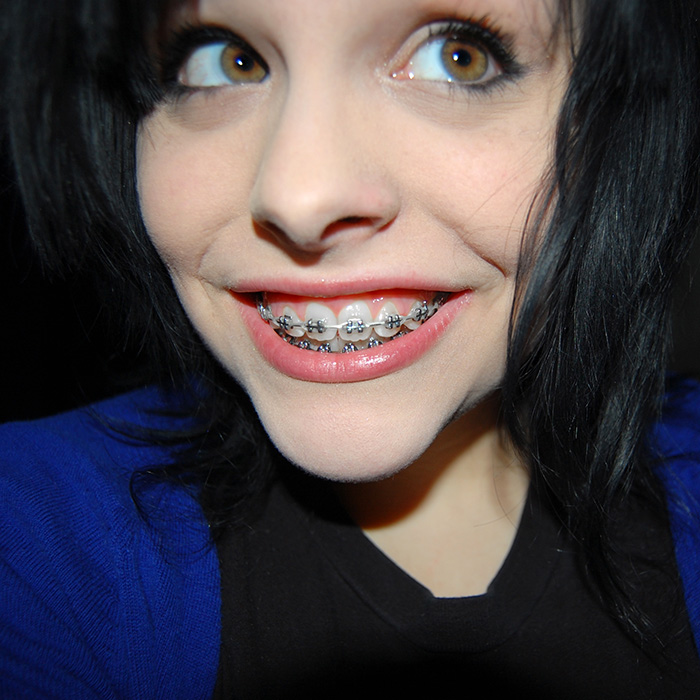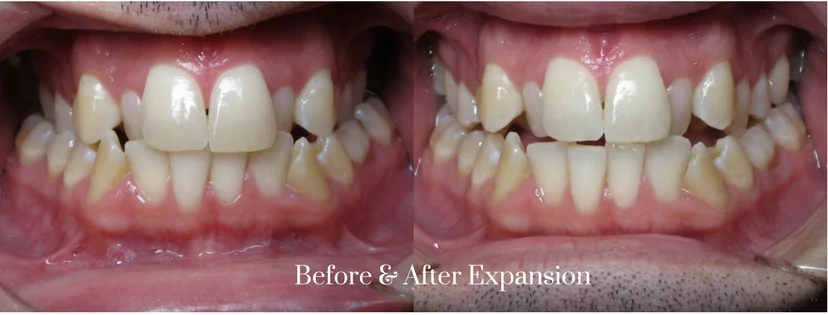As a culture, we tend to think of braces as a teenage experience, so it can be surprising to learn that the American Association of Orthodontists (AAO) recommends that children have an initial orthodontic consultation by age 7. If a child is starting to develop complicated orthodontic problems, this early checkup allows the orthodontist to head them off with Phase 1 treatment. Below are 5 conditions that you, as a parent/guardian should look out for. Here are 5 conditions that warrant early treatment during mixed dentition (ages 6-9). 1. Mouth breathing /snoring This can cause narrow arches which delays and causes poor tooth emergence. Our patented Press-On expanders painlessly correct this condition. 2. Lack of Space for Permanent Teeth Permanent incisors normally emerge at age 6. Delayed emergence usually indicates a lack of space. This is easily corrected with painless expanders and or with short term braces (less than one…
teeth
The Daily Grind of Bruxism

MOST PEOPLE GRIND OR CLENCH their teeth briefly when annoyed or in a tense situation. That level of teeth-grinding isn’t really something to worry about. It’s when you do it far more frequently, often without even realizing it (you might even do it in your sleep!), that it can potentially become a serious problem. The medical term for this kind of teeth-grinding is bruxism. Bruxism: What and Why The main causes of bruxism is stress and an imperfect bite. Symptoms of Bruxism: Frequent headaches from all the strain Enlargement in your jaw muscles (because you’re giving them quite the workout!) Shifting teeth Flattened chewing surfaces of teeth Exposed dentin and increased tooth sensitivity Chipped/cracked/split teeth Tooth loss Your Next Steps Depending on which type of bruxism you have, there are a variety of treatments or approaches to either reduce the grinding or the damage it causes. Relaxation Particularly for stress-related bruxism, relaxation techniques such…
Why See An Orthodontist?

Did you know that an orthodontist must become a dentist FIRST? All orthodontist are dentists, but not all dentists are orthodontists. Extra training and education that makes an orthodontist qualified to safely and effectively adjust a patient’s dental alignment, which is why it’s so important to choose an orthodontist to straighten your smile. This is especially true with Invisalign treatment where the diagnosis needs to be thorough and complete to set up a great treatment sequence! We have treated over 1,500 patients with Invisalign and we are committed to excellence to optimize your smile and dental health! Trust your team at Dr. McSurdy’s office Dr. David W. McSurdy graduated from Perkiomen Valley High School and then went to receive his Bachelor of Science degree from Lafayette College. He completed his dental training at Temple University School of Dentistry and continued on for his specialized training in orthodontics at Fairleigh Dickinson…
Easy Ways to Improve Your Dental Health
WE’VE ALL HEARD that if we want healthy teeth, we should brush twice a day, floss once a day, and schedule regular dental cleaning appointments twice a year. Definitely keep doing those things, but if you want to step up your oral health game, here are a few easy ways to do that. Replace Your Toothbrush Regularly One of the simplest ways you can improve your dental health and hygiene is to replace your toothbrush on a regular basis. Vigorous brushing will make the bristles fray and reduce the brush’s cleaning ability, but that’s not the only reason toothbrushes should be replaced often. A lot of the bacteria we brush off our teeth stays on the bristles of our toothbrushes. Proper storage–meaning storing the toothbrush upright and letting it dry out between uses–can keep a toothbrush from getting smelly and nasty too fast, but it’s still important to replace your toothbrush at least…
Why is expansion of my upper jaw necessary?

Great Question! Expansion is the process of creating growth change — usually to help alleviate crowding which most often prevents the need for extractions. Expansion also can correct a dental cross bite where the back teeth fit inside of the lower back teeth.Not all cross bites, however, require a growth change. Often, the back teeth are tipped to fit inside the lower back teeth. In this case, we simply need to upright the upper molars cheek-wise to make the correction. We make the decision on whether to expand by measuring the width of the upper front teeth and the width of the jaw at the upper 1st permanent molars. The upper jaw should be 35 to 40 millimeters for us to obtain a stable result. So we actually measure to make sure there is a proper proportionality. James McNomara has been teaching this diagnostic method since the late 1980’s and…

